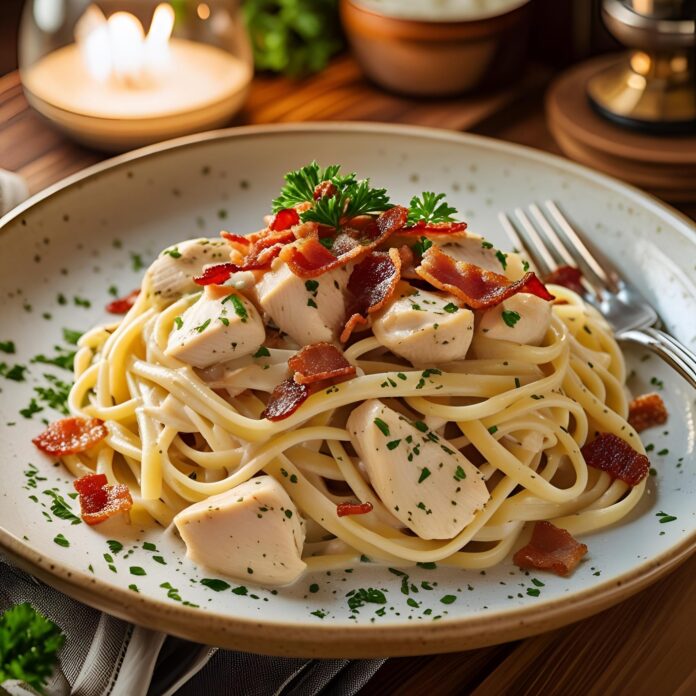Hibachi Chicken Recipe
Hibachi chicken is more than just a dish—it’s a culinary experience that combines sizzling flavors, entertaining cooking methods, and a delightful fusion of East and West. Popularized in Japanese steakhouses across the United States, this dish captures the essence of teppanyaki-style cooking, where chefs prepare food on a large, flat iron griddle in front of an audience. The term “hibachi” originally refers to a traditional Japanese heating device, but in Western culture, it’s become synonymous with this theatrical and interactive style of cooking.

What makes hibachi chicken stand out is its simplicity paired with bold flavors. Tender chicken breast or thigh is cooked quickly over high heat, often accompanied by vegetables like zucchini, onions, and mushrooms. The dish is usually served with fried rice and a side of creamy, tangy yum yum sauce—a condiment that has become just as iconic as the main course itself.
This dish appeals to a wide range of tastes. It’s savory, slightly sweet, and can be customized for spice levels, portion sizes, and even dietary preferences. Whether you’re someone who craves a comforting, home-cooked meal, or you’re trying to recreate the restaurant experience at home, hibachi chicken is an accessible and rewarding option. It bridges the gap between fast and flavorful, requiring minimal ingredients but delivering maximum impact.
In recent years, the popularity of hibachi cooking has expanded beyond the walls of restaurants. Home cooks are increasingly experimenting with teppanyaki-style meals, encouraged by the dish’s quick cooking time and adaptability. With the right tools and a little preparation, anyone can bring the excitement of a Japanese steakhouse into their own kitchen.
This recipe guide aims to be more than a set of instructions—it’s a deep dive into the techniques, ingredients, and cultural backdrop of hibachi chicken. We’ll explore everything from the history of hibachi cooking, to selecting the right cuts of meat, preparing sauces from scratch, and mastering the timing and rhythm of high-heat cooking. Whether you’re a seasoned home chef or a curious beginner, this guide will walk you through each step to ensure a flavorful and satisfying result.
By the end of this article, you’ll not only know how to make hibachi chicken—you’ll understand the story behind it, feel confident in experimenting with it, and maybe even be inspired to host your own hibachi night. Let’s start by exploring the roots of hibachi cooking and how it evolved into the culinary staple we know and love today.
History and Cultural Background
Hibachi cooking, while widely popularized in the West, has deep roots in Japanese culture. The word “hibachi” (火鉢) literally means “fire bowl.” In traditional Japanese households, a hibachi was a round, open-topped container made of ceramic or metal, designed to hold burning charcoal. While it was originally used for heating rather than cooking, the concept evolved over time.
1.1 Origins in Japan
The traditional hibachi device was used centuries ago, primarily during colder months, to warm rooms. It wasn’t until the 20th century that portable charcoal grills using the same principle began being used for cooking. However, Japanese cuisine did not originally involve “hibachi-style” cooking as it is known in the West today.
What most people refer to as hibachi cooking in the U.S. is more accurately described as teppanyaki—a style of Japanese cuisine that involves cooking on a flat iron griddle, called a teppan. The word yaki means “grilled” or “pan-fried,” so teppanyaki translates to “grilled on a steel plate.”
1.2 Western Influence and the Rise of Teppanyaki Restaurants
Teppanyaki cooking became a performance art in post-World War II Japan, pioneered by the Misono restaurant chain in Kobe in the 1940s. Chefs began preparing meals in front of diners, using knives and spatulas with flair to entertain guests. This style of cooking gained significant traction with American tourists, leading to its adaptation in the United States.
When teppanyaki-style dining made its way to the U.S., it was often branded as “hibachi cooking,” likely because the term was easier to market and sounded more exotic to Western ears. Over time, the name stuck—even though the method was technically teppanyaki.
1.3 Hibachi in the United States
By the 1960s and 70s, hibachi-style steakhouses were flourishing across America. Chains like Benihana introduced millions of Americans to this new dining experience—flipping shrimp tails into shirt pockets, creating onion volcanoes, and turning dinner into an interactive show. Hibachi chicken, steak, and shrimp became signature dishes in this style, typically served with fried rice, stir-fried vegetables, and dipping sauces.
The combination of accessible ingredients, theatrical cooking, and customizable flavors made hibachi-style meals a lasting favorite in American dining. Today, home chefs seek to recreate that experience in their own kitchens—no hibachi grill or culinary training required.
Hibachi Chicken Recipe
Hibachi chicken is more than just a dish—it's a culinary experience that combines sizzling flavors, entertaining cooking methods, and a delightful fusion of East and West. Popularized in Japanese steakhouses across the United States, this dish captures the essence of teppanyaki-style cooking, where chefs prepare food on a large, flat iron griddle in front of an audience. The term “hibachi” originally refers to a traditional Japanese heating device, but in Western culture, it's become synonymous with this theatrical and interactive style of cooking.
Ingredients
- For the Chicken:
- 1 ½ lbs boneless, skinless chicken thighs or breasts, cut into bite-sized pieces
- 2 tablespoons vegetable oil (or sesame oil for extra flavor)
- 2 tablespoons soy sauce
- 1 tablespoon butter
- 1 tablespoon garlic, minced
- ½ teaspoon ground black pepper
- Salt to taste
- For the Hibachi Sauce (Optional but recommended):
- 2 tablespoons soy sauce
- 1 tablespoon mirin or rice vinegar
- 1 tablespoon sake (optional)
- 1 teaspoon sugar
- Optional Add-ins:1 small onion, sliced
- ½ zucchini, chopped
- Mushrooms, halved
Instructions
- Prep Ingredients
Cut chicken into bite-sized cubes. If using veggies, slice them now. - Make Hibachi Sauce (if using)
In a small bowl, mix soy sauce, mirin, sake, and sugar. Set aside. - Heat the Pan
Heat a large skillet or griddle over medium-high heat. Add vegetable oil. - Cook Chicken
Add chicken to the hot pan in a single layer. Let sear for 2–3 minutes without moving, then stir occasionally until browned (about 5–7 minutes total). - Add Garlic & Butter
Add minced garlic, butter, and black pepper. Stir well to coat the chicken. - Add Sauce (Optional)
Pour in the hibachi sauce and cook another 2–3 minutes, until chicken is well-glazed and cooked through. - Cook Veggies (if using)
Push chicken to the side of the pan or remove temporarily. Add more oil if needed and stir-fry vegetables until tender-crisp, 3–5 minutes. Combine with the chicken. - Serve
Serve hot over steamed rice, fried rice, or with hibachi noodles. Drizzle with yum yum sauce if desired.
Notes
- Protein Swap: You can substitute shrimp, steak, or tofu for chicken.
- Make it spicy: Add a pinch of chili flakes or a dash of sriracha during cooking.
- Butter Tip: Hibachi-style dishes often use a blend of garlic butter—try mixing softened butter with garlic and parsley ahead of time for extra flavor.
- Yum Yum Sauce: Popular creamy dipping sauce made with mayo, ketchup, rice vinegar, garlic powder, and paprika.



